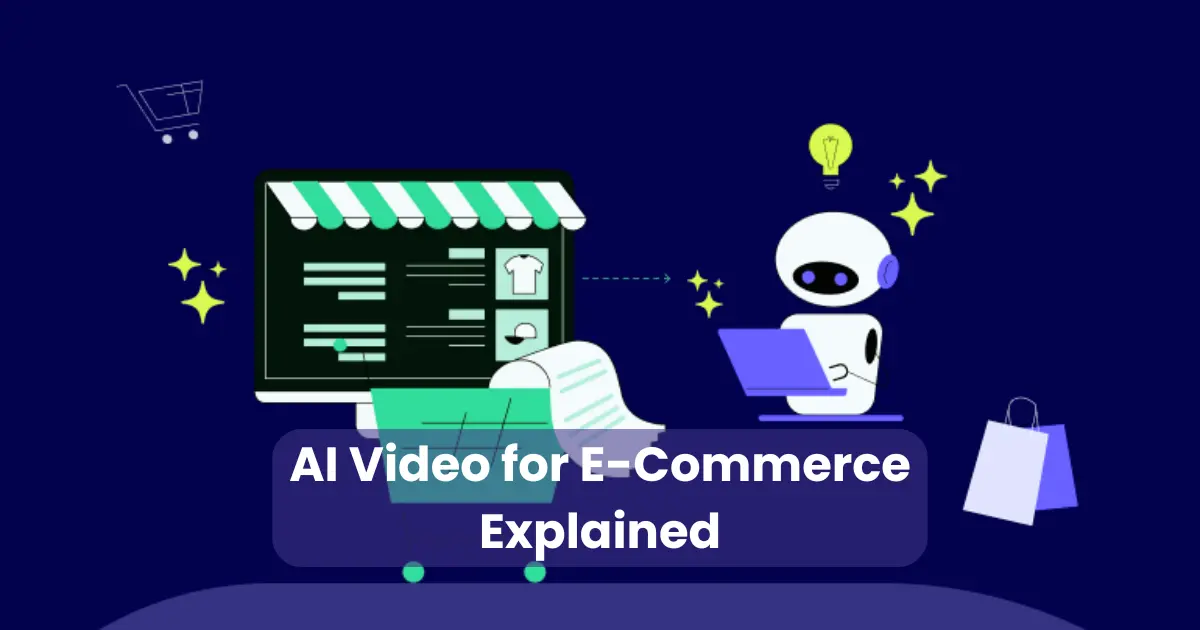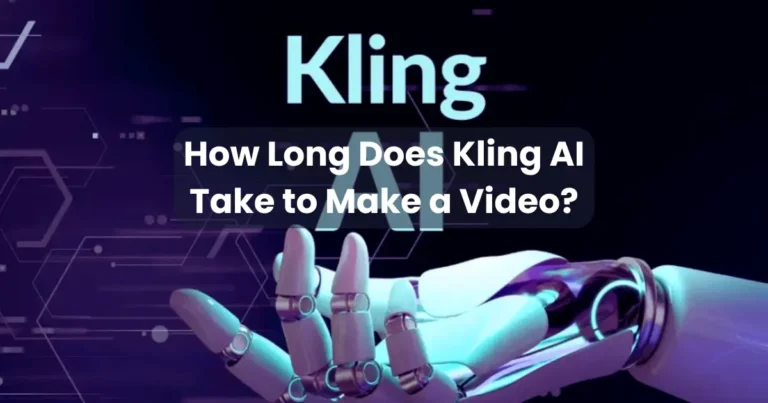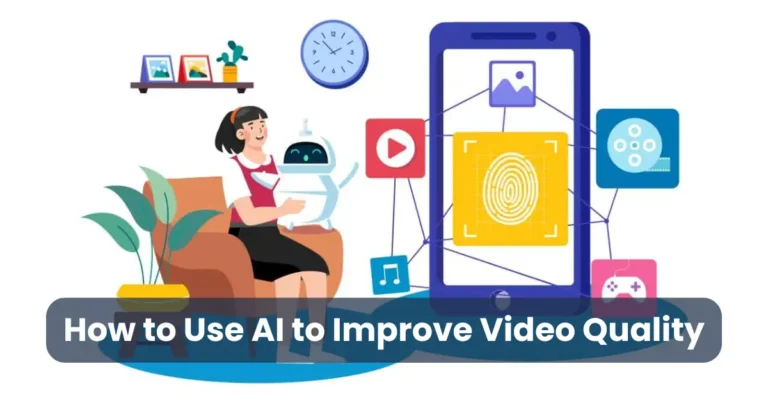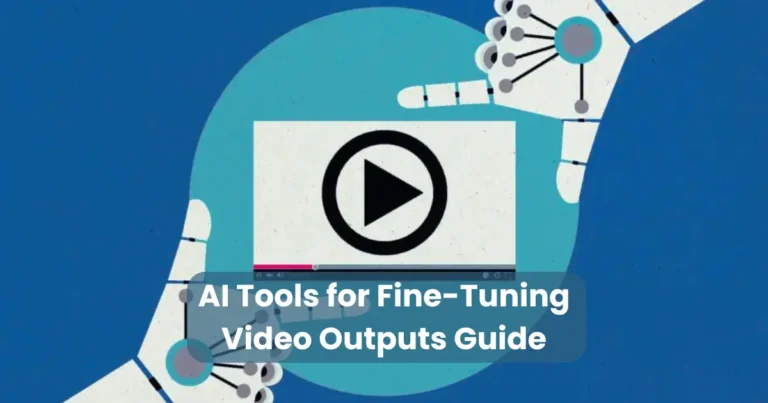AI Video for E-Commerce Explained

Contents
In today’s fast-paced digital marketplace, AI video for e-commerce has become a game-changing solution that empowers brands to deliver dynamic and personalized shopping experiences. As consumer expectations rise and attention spans shrink, businesses are increasingly turning to artificial intelligence to create engaging video content that drives conversions and improves customer retention.
Moreover, this technology allows online retailers to automate video production, reduce costs, and scale their marketing efforts effortlessly. Thanks to real-time data processing and machine learning, videos can now be tailored to individual users—ensuring relevance and boosting interaction. In the sections that follow, you’ll learn how AI video works, why it matters, and how it’s shaping the future of online retail.
What Is AI Video for E-Commerce?
AI video for e-commerce refers to the use of artificial intelligence technologies to generate, customize, and distribute video content specifically for online retail platforms. These videos are often created automatically using product details, customer data, or even simple text inputs—minimizing the need for manual video editing or production.
In many cases, machine learning algorithms analyze shopper behavior and preferences, then create tailored videos that highlight product features, benefits, and use cases. The result is a more engaging and efficient way to showcase items, improve product understanding, and influence buying decisions.
From product demos to personalized recommendations, AI-driven videos can be embedded directly into product pages, email campaigns, and social media ads—making them a versatile tool for digital marketers and e-commerce business owners alike.
How AI Video Works in E-Commerce
To understand how AI video for e-commerce functions, it’s important to look at the step-by-step process behind the scenes. Most of the work is done automatically, with minimal human intervention—making it highly efficient.

- Data Collection
First, product information is gathered. This includes descriptions, images, pricing, specifications, and customer reviews. Often, customer behavior data—such as browsing patterns and purchase history—is also collected. - Template Selection
Next, AI tools select or generate a video template. These templates are pre-designed to match the branding and layout requirements of the e-commerce platform being used. - Content Generation
Then, the AI system creates the video by inserting product data into the template. Voiceovers, background music, subtitles, transitions, and animations are all added automatically based on the product’s context. - Personalization
Moreover, AI can tailor videos to individual users. For example, someone who browsed sports shoes may be shown a video emphasizing comfort and performance, while another might see a video focused on style and design. - Optimization & Distribution
Finally, the video is optimized for different channels—such as mobile, desktop, or social media—and scheduled for publishing. In many systems, A/B testing features are included to monitor performance and refine the video over time.
As a result, AI video for e-commerce is not just efficient—it’s intelligent, scalable, and built to deliver results faster than traditional video production methods.
Benefits of Using AI Video in E-Commerce
Without a doubt, AI video for e-commerce offers a wide range of advantages that make it a must-have tool for modern online retailers. As the demand for engaging content grows, so does the need for efficient and scalable video solutions. Fortunately, AI delivers on both fronts.

1. Increased Conversion Rates
To begin with, videos help customers understand products better. When AI-powered videos demonstrate how a product works or fits into daily life, confidence in purchasing increases—leading to higher conversion rates.
2. Scalability and Speed
Moreover, hundreds of videos can be generated in a fraction of the time it would take a traditional team. Seasonal promotions, product launches, or flash sales can be supported with instant video content, all produced automatically.
3. Personalization at Scale
Because AI systems can analyze user behavior, personalized videos can be delivered to different audience segments. For instance, a first-time visitor might see an introductory video, while a returning customer could be shown a loyalty offer.
4. Cost-Effectiveness
In traditional workflows, video production is costly and time-consuming. However, with AI video for e-commerce, expenses are reduced drastically—especially for stores with large inventories.
5. Data-Driven Optimization
Additionally, performance metrics can be tracked and used to improve future videos. AI tools often include built-in analytics, allowing for ongoing enhancements based on viewer engagement and conversion data.
6. Omnichannel Compatibility
Finally, these videos can be easily adapted for multiple platforms—such as websites, social media, mobile apps, and even email marketing. This ensures a consistent brand message across all customer touchpoints.
Types of AI Videos Used in Online Stores
Different types of videos serve different marketing purposes, and with AI video for e-commerce, each format can be generated automatically to meet specific goals. Thanks to artificial intelligence, content can be adapted for awareness, engagement, and conversion—without needing a full production crew.

1. Product Showcase Videos
First and foremost, product showcase videos are the most common type. These short clips highlight key features, benefits, colors, sizes, and price points. They are often generated using product data feeds and are ideal for product detail pages.
2. Personalized Product Recommendations
In addition, AI can create customized videos that suggest items based on browsing history or past purchases. These are highly effective in retargeting campaigns and email marketing, as they speak directly to the customer’s interests.
3. Unboxing Simulations
Using CGI and templated animations, unboxing videos can be simulated by AI. These offer the thrill of unboxing without filming real-life footage—saving both time and money.
4. How-To & Demo Videos
Furthermore, AI-generated tutorials and demonstrations help explain how a product works. These are especially useful for tech gadgets, kitchen appliances, or fitness gear—where visual guidance builds user confidence.
5. Dynamic Retargeting Videos
Another powerful format includes dynamic retargeting videos, which are created based on user behavior and cart activity. These encourage customers to return and complete a purchase they may have abandoned.
6. Promotional & Seasonal Campaigns
Lastly, promotional videos—highlighting discounts, events, or seasonal launches—can be rolled out across an entire product catalog instantly. All that’s needed is a template and a dataset, and the AI takes care of the rest.
As a result, AI video for e-commerce not only diversifies your content strategy but also ensures your message stays relevant, timely, and effective.
Case Studies: Brands Leveraging AI Video
Many forward-thinking brands have already embraced AI video for e-commerce to enhance their customer experience and drive measurable results. Below are a few real-world examples that demonstrate how AI video has been effectively integrated into digital strategies.

1. ASOS – Personalized Shopping Videos
ASOS, a global online fashion retailer, began using AI-generated videos to personalize the shopping journey. These videos display curated outfit recommendations based on the shopper’s browsing history and preferences. As a result, engagement levels increased and cart abandonment rates were reduced significantly.
2. Sephora – Product Tutorials at Scale
Sephora uses AI video for e-commerce to automate how-to videos for its beauty products. Each video includes step-by-step tutorials, application tips, and usage guidance—all generated from existing product data. This approach boosted both customer satisfaction and average order value.
3. Wayfair – Smart Product Visualizations
Wayfair, a home decor and furniture giant, implemented AI video technology to show 360° product views and room simulations. Shoppers can visualize furniture in different settings and colors, which helped reduce returns and increase buyer confidence.
4. BOSE – Dynamic Retargeting Ads
BOSE, a leading audio brand, used AI videos in retargeting ads to re-engage website visitors. The videos dynamically changed based on the products the user had viewed, delivering a personalized ad experience that led to improved ad performance and ROI.
5. Nike – Seasonal Campaign Automation
Nike leveraged AI to automate video creation for new seasonal collections. By simply feeding product catalog updates into the system, Nike launched localized campaign videos across multiple regions—cutting down production time by weeks.
Clearly, AI video for e-commerce is more than a trend—it’s a proven strategy being adopted by industry leaders to streamline content creation and maximize impact.
Challenges and Limitations
While AI video for e-commerce offers numerous advantages, it’s not without its limitations. Like any technology, it brings along challenges that must be considered before full-scale implementation. Fortunately, being aware of these issues allows brands to plan better and make informed decisions.
1. Limited Creativity and Emotional Appeal
Although AI can generate highly functional videos, the creative flair and emotional nuance often found in human-made content may be lacking. As a result, campaigns that rely heavily on storytelling or humor might still require manual input.
2. Dependence on Quality Data
Moreover, the effectiveness of AI-generated video depends heavily on the quality and completeness of the input data. If product descriptions are unclear or images are low-resolution, the final video may appear generic or inaccurate.
3. Repetition and Predictability
Because many AI videos are created from templates, the output may feel repetitive across large product catalogs. This can lead to “template fatigue,” where viewers begin to lose interest due to overly uniform presentations.
4. Privacy and Data Concerns
Additionally, personalized videos require customer data to function effectively. Without proper safeguards and transparency, this can lead to privacy concerns, especially in regions with strict data protection laws.
5. Initial Investment in Tools
Even though costs are reduced in the long run, the initial investment in reliable AI video for e-commerce platforms or software might be a barrier for smaller businesses. Learning curves and integration complexity can also be concerns.
Despite these limitations, many of the challenges can be mitigated with a thoughtful strategy, regular content updates, and human oversight where needed. Therefore, AI video remains a valuable asset for scaling video content in online retail—especially when used wisely.
Future of AI Video in E-Commerce
Looking ahead, the potential of AI video for e-commerce is only expected to grow. As technology evolves, the capabilities of AI-driven video production will become even more advanced, personalized, and interactive—redefining how online shopping experiences are delivered.

1. Hyper-Personalized Content
In the near future, videos may be tailored not only to user preferences but also to real-time emotional cues and behavioral signals. By using facial recognition, voice tone analysis, or biometric feedback, AI systems will craft video messages that resonate deeply with each viewer.
2. Interactive and Shoppable Videos
Furthermore, interactive AI videos—where users can click on products, explore features, or make purchases directly within the video—will become increasingly common. This immersive experience is expected to blur the line between content and commerce even further.
3. AI-Generated Spokespersons
Synthetic voices and avatars are already being used, but soon, fully AI-generated brand ambassadors may represent products across languages and markets. These digital personas will deliver consistent, on-brand messaging at scale.
4. Smarter Content Optimization
Additionally, AI will continuously monitor viewer behavior and optimize video length, style, and tone in real time. As a result, every video interaction will become more efficient, keeping audiences engaged and conversions high.
5. Global Localization
AI tools will also play a major role in localizing video content for different regions—translating voiceovers, changing visuals, and adjusting messaging based on cultural norms. This will allow brands to expand globally without increasing production costs.
Clearly, the future of AI video for e-commerce is not just bright—it’s transformational. As innovation continues, businesses that adopt early will have a competitive edge in delivering captivating, personalized, and scalable shopping experiences.
Conclusion
In today’s competitive digital marketplace, the demand for faster, more engaging, and cost-effective content has never been higher. That’s where AI video for e-commerce steps in—revolutionizing how products are showcased, personalized, and delivered to customers across channels.
Although some creative and technical limitations exist, the benefits far outweigh the challenges. From increased conversion rates to personalized customer journeys, AI-generated video is proving to be a game-changer. And as technology continues to evolve, its applications will only grow more sophisticated and impactful.
By embracing AI video for e-commerce today, brands position themselves for long-term success, future-ready marketing strategies, and stronger customer engagement. So whether you’re a small startup or a large-scale retailer, integrating AI video into your online store could be the smartest move you make this year.






